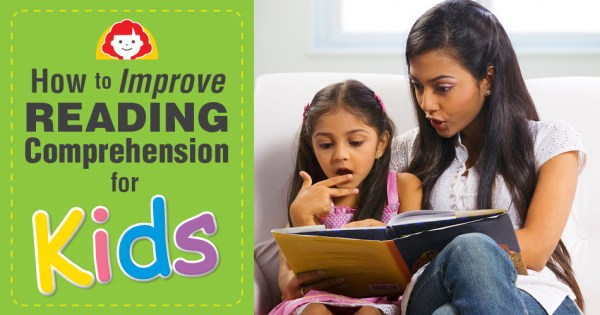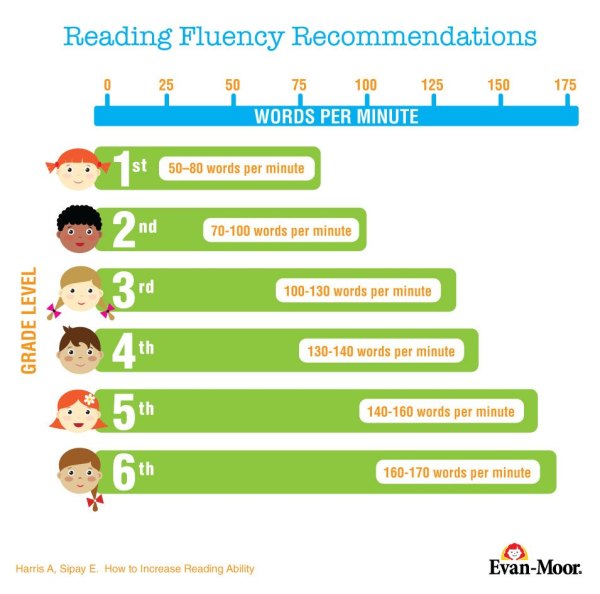
Good reading comprehension instruction begins with an interaction between the content and the reader. It is the ability to read a sentence and make sense of the overall meaning. Reading comprehension is directly linked to reading fluency (see below). After reading fluency is established, reading comprehension begins with children’s ability to plan, check, and adjust their understanding while in the learning process. Explicit teaching of reading comprehension strategies will improve children’s ability to monitor their own understanding as they read. Teach your child how to comprehend what he or she reads with these five steps.
1. Make connections: When we make connections between new learning and previous experiences, our brains make stronger links between our learning. Some questions to ask are:
- What does this story remind you of?
- How is this similar to other stories you have read?
- Can you relate to the characters in this story?
- Can the events in this story happen in the real world?
2. Ask questions: Part of developing children’s reading comprehension is teaching them to ask themselves questions as they read. Start this habit early by asking your child questions about what he or she is reading. Begin by reading aloud and asking questions about the story. A few examples are:
- What do you think?
- Why do you think the character did that?
- What do you think will happen?
3. What is important? Narrow down the details of the text
- What is the topic of this story or text?
- What are the details in the text?
- What are the details in the text mostly about?
4. Monitor Comprehension: There are many different techniques for monitoring reading comprehension. Incorporate a few into your nightly reading routine.
- reading aloud
- re-reading texts
- reading slower
- identifying confusing words
5. Provide the right types of books
Choose books that are within your child’s reading level and ability. If the reading text is too difficult, children will spend most of their brain power decoding new words and not remember or understand what they read. If you don’t know how to make sure your child is reading books within his or her reading level, try the 5 finger rule.
The Five Finger Rule
- Choose a book
- Have the child read the second page
- Hold up a finger for each word the child doesn’t know
- If there are five or more words the child doesn’t know, choose an easier book
If you are still unsure, do the same thing again on another page. Also, discuss whether or not your child understands and likes what he or she is reading.
What is fluency and how does it affect reading comprehension?
Reading fluency is directly connected to reading comprehension. Without fluency, reading comprehension becomes very difficult. Fluency is not about reading as fast as you can, but about reading at an appropriate rate with accuracy and inflection. Every time your child is reading, he or she is decoding the words carefully in his or her head. The more exposure children get to new words, the faster their young minds can remember words and recognize them without sounding them out. This is called automaticity. As students transition into fluent readers, they are able to focus on the content of what they are reading rather than the words.
How Is Your Child Doing?
Listed below are reading level recommendations for students to read grade level–appropriate texts by the end of the year. Experts’ opinions vary, but these are some good baselines to monitor your child’s fluency.

Keep in mind that these are a simple gauge and just one measurement tool used to identify students’ readiness. Every student learns in a unique way and at his or her own pace. If your child is not at grade level, focus on increasing his or her current score by 10 to 15 words by the end of the year and then celebrate your child’s successes!
If you would like to test your child at home, pick a grade level–appropriate book and time your child reading for one minute. Count the number of words he or she reads correctly within that time frame. (Added words and incorrect words cannot be counted.) Please do not ever make your child feel deficient because he or she cannot read the correct number of words per minute.
The most important thing to do to improve reading comprehension is to read consistently throughout the week. Practice is an essential part of students’ word recall and understanding. The more words your child can read with ease, the easier it will be to understand the content of what he or she is reading.

About the Author: Heather Foudy is a certified elementary teacher with over 7 years’ experience as an educator and volunteer in the classroom. She enjoys creating lessons that are meaningful and creative for students. She is currently working for Evan-Moor’s marketing and communications team and enjoys building learning opportunities that are both meaningful and creative for students and teachers alike.
How to Improve Reading Comprehension for Kids